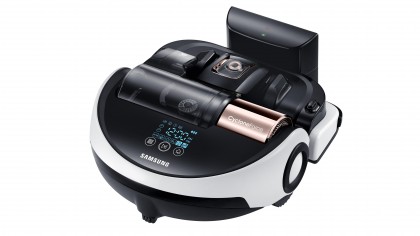Rise of the robot vacuum
How robots are beginning to take over our floors

One of the funnier things that happened earlier this year was a South Korean woman getting her hair caught in a robot vacuum cleaner. It wasn't clear why she was sleeping on the floor, which is how the robovac came across her lovely locks in the first place, but luckily she was able to disentangle herself with the help of four emergency workers without any serious physical injury.
So long as you're not in the habit of sleeping on the floor, robot vacuum cleaners are a great way to keep your house tidy without having to do any of the actual hard labour yourself.
Robots may bring to mind advanced Terminator-style intelligent machines that threaten the survival of the human race, but aside the potential for random hair-eating incidents if you're passed out on the floor, there's nothing to fear from robot vacuums.
This type of technology has actually been around for more than a decade, and while it was initially quite a niche technology, vendors like Samsung, LG, and most recently Dyson have entered the market with high-end models offering everything from self-emptying dustbins and scheduling cleaning to built-in Wi-Fi and video cameras.
How they work

While there's a large price disparity between entry-level robot vacuums, the basic mechanics of how they all work are more or less the same.
Most models are round in shape, with a built-in motor that pushes the wheels along so it can vacuum autonomously for anywhere from half an hour to four hours 2-3 hours a stretch – depending on how big the internal rechargeable battery is. Almost all robot vacuum cleaners, save for the very cheapest models, will sense when they're running low on battery and automatically head back to the charging station for a top-up.
Using sensors and clever algorithms, robot vacuum cleaners are able to map your house's layout and use this to give each room a proper clean. If it comes across an obstruction, such as a wall or door, it can automatically navigate around it.
Sign up for breaking news, reviews, opinion, top tech deals, and more.
Since you can schedule them to operate at certain days and times, you don't have to be physically present while they're running, so you can set it up to vacuum the floors during the day while you're at work and come home to a squeaky clean carpet. Since they're quite short, they can typically fit underneath furniture that a regular vacuum can't get to, such as sofas, beds and cupboards.
Limitations

As clever as a robot vacuum is, it can't actually distinguish between dirt and a USB cable, belts, or that priceless gold necklace you inherited from your Aunt Gertrude. This means you'll still have to do some rudimentary tidying up of any items on the floor before you get the robovac on the job.
If it doesn't come with built-in cliff sensors (a feature that detects steep drop offs, such as the ones posed by a set of stairs), you'll also have to make sure you block these off lest your fancy robovac takes a tumble.
Most robot vacuums support 'virtual walls' as a solution, and these either come with the unit or are available as accessories. Virtual walls are small blocks that use infrared to communicate with the robot vacuum, essentially preventing it from going past. These are handy for putting in front of rooms that you don't cleaned or in front of stairs if the vacuum doesn't have integrated cliff sensors.
Another common complaint with robot vacuum cleaners is that they don't offer the same suction power of a conventional vacuum, and hence don't do as good a job for cleaning carpet. Most experts recommend holding onto your existing vacuum cleaner for 'deep' cleans once a month, and using the robot vacuum cleaners for in between top-ups.
Meet your new robot cleaning overlords

That said, the very latest robot vacuums at the premium end of the market have become a lot better at overcoming the poor suction issue. Dyson is due to enter the market later this year with the Dyson 360 Eye, which claims to offer more suction power than any other robot vacuum cleaner. According to company reps, Dyson has been working on its own robot vacuum cleaner for 16 years, and waited until it come up with a unit that could clean properly.
The 360 Eye makes for a good case in point of the sort of features you can get at the top end of the market. The built-in Wi-Fi works with an Android/iOS app called Dyson Link, and this lets you setup a cleaning schedule and provides access to remote control functions directly from your smartphone.
The 360-degree camera that it's named after also offers a superior visual mapping system that actually sees its environment, enabling it to create a detailed floor plan and accurately triangulate its position at all times.
Instead of the usual small wheels for moving around, the 360 Eye uses tank-like treads that enables it to climb over any obstacles on the ground as high as 15mm. The wider, carbon fibre brush bar is also different to the traditional side brushes used on most other vacuum cleaners, which allows it to get closer to walls and other hard-to-reach areas.
More importantly, it offers a deeper and more effective clean than any other robot vacuum cleaner thanks to the advanced digital motor, radial root cyclone technology and large brush head.

Samsung, which has been in the robot vacuum space a lot longer than Dyson, isn't taking the challenge lying down. The new Powerbot promises to deliver up to 60 times more powerful suction than previous models, making it a much better option for replacing an existing 'manual' vacuum cleaner altogether.